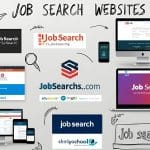What to Wear to an Interview is as much a psychological battle as it is about your skills. The clothes you choose can set the tone for the entire meeting and influence your potential employer’s first impression. But—what exactly should you wear to an interview to make the best impression, and what should you steer clear of? This guide breaks down the dos and don’ts of interview attire, helping you put your best foot forward when it matters most.
The Importance of Dress Code in Interviews

First Impressions Are Lasting
- Your attire is the first thing noticed. According to research, hiring decisions are often made within the first 30 seconds of a meeting.
- Dressing appropriately signals professionalism, attention to detail, and respect for the employer and the opportunity.
“You never get a second chance to make a first impression.” – Will Rogers
What to Wear: Key Considerations
Know the Company Culture
- Research is Key: Look for photos on the company’s website or social media pages to gauge their usual attire.
- Ask if Unsure: If you’re uncertain, it’s perfectly acceptable to ask HR or your contact person what the dress code is.
Classic Business Attire for Formal Environments
- Men: Opt for a well-fitted suit in dark shades like navy or charcoal paired with a white or light-colored dress shirt and a conservative tie.
- Women: Consider a tailored suit, either with pants or a knee-length skirt, in a neutral color. Pair it with a modest blouse and closed-toe flats or heels.
Business Casual for Less Formal Settings
- Men: Slacks or khakis with a button-down shirt or a fine-knit sweater. Blazers are optional but add a polished touch.
- Women: A smart blouse paired with tailored trousers or a knee-length skirt. A cardigan or blazer can enhance the look.
Tech & Creative Industries
- Express Yourself, Smartly: While these sectors are known for more relaxed dress codes, don’t take it too far. A crisp shirt with a pair of stylish chinos or a sleek dress with statement jewelry can strike the right balance between professional and creative.
What to Avoid: Potential Pitfalls

Overly Casual Attire
- Avoid jeans, t-shirts, hoodies, and sneakers unless explicitly specified as appropriate.
- Shorts, flip-flops, and baseball caps are definite no-nos.
Distracting Patterns and Colors
- Bright, flashy colors or busy patterns can distract from what you’re saying.
- Stick to solid colors or simple patterns that don’t dominate the ensemble.
Untidiness
- Ensure clothes are clean, ironed, and fit well.
- Scuffed shoes or clothes with stains can detract from a polished appearance.
Accessorizing to Complement, Not Distract

Keep It Simple
- Opt for minimal jewelry that doesn’t make noise or catch excessive attention.
- Bags should be professional and tidy—avoid logos or bright patterns.
The Power of Personal Touch: Anecdotes from the Field
Several years ago, I was attending an interview for a digital marketing position. Knowing the firm’s modern and creative approach, I opted for a chic blazer with a simple black tee and dark jeans. I was initially worried about underdressing, but it turned out to be the perfect mix of professional and casual, fitting right in with the company’s culture. This taught me that understanding the employer’s environment can be pivotal in making dressing decisions.

By following these guidelines, you're well on your way not only to dressing for success but also to feeling the part. Good luck with your interview, and remember: your confidence and personality are your best accessories.



